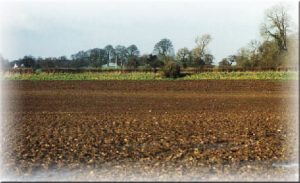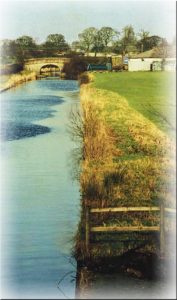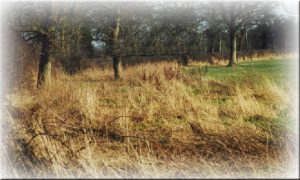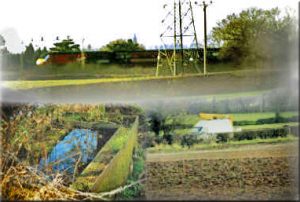Page Links: |Monitoring| |Statistics| |Law|
Dcline
Habitat
nest sites
Link Pages: law, statrs
Decline in the Barn Owl Population
Decline
The Barn Owl has been less able to adapt to changes in the environment during the last half a century compared to some other birds and animals, for example kestrels and foxes have adapted better. Some birds of prey have been saved from extinction but the barn owl continues to be a concern though through the work of groups like ours a great deal of progress has been made.
The decline in Cheshire was one of the worst in the country. In 1932 there were 240 pairs of barn owls in Cheshire but by 2000 only 19 breeding pairs were recorded; that’s a staggering 92% decline. This appears to be an improvement over 1999 when only 10 pairs were recorded, the truth is that the count for 2000 was more accurate and though there will be a few pairs that escaped detection, this figure can be considered to be a good reflection of dire state of the barn owl population in Cheshire at that time. Further evidence of the continued decline is that on average in 2000 each breeding pair succeeded in rearing 2.2 fledglings – this is was insufficient to maintain a stable barn owl population in Cheshire. At least 3 fledglings per pair were required; this might not seem like a big difference but in reality groups such as the Mid Cheshire Barn Owl Conservation Group had a great deal of work to do.
Major Causes of Decline
The causes of the decline are many but some of the main ones are shown below:
- Loss of habitat that is, rough grassland
- Loss of nest sites
- Collisions with road and rail traffic
- Drowning in steep-sided water tanks
- Prey contaminated with rodenticides
- Starvation
- Severe Winters
- Habitat lost
The expansion of industry and housing into the countryside has taken away hunting grounds, nesting sites and corridors. Even though open countryside may be nearby the rough grassland barn owls need is also disappearing. The introduction of more efficient and intensive land use, larger fields worked right up to their boundaries and the cutting or removal of hedgerows has resulted in large scale loss of rough grassland. This has been very advantagous to land users but unfortunately this loss of rough grassland has been to the disadvantage of the barn owl.
- Nest sites lost
- In recent years many traditional nest sites have disappeared along with the habitat. Old farm buildings have collapsed or been converted into houses and many hollow trees have been lost to Dutch Elm Disease and storms. The tendency towards larger fields limits the regrowth of natural nesting sites.
Barn Owls don’t build a nest in the normal sense of the word, they lay their eggs on a layer of pellets which have accumulated in their roosting site. Such sites are deep spacious cavities in trees (especially Elm and Ash), dark corners of barns, churches and other old buildings, or even gaps in straw stacks. Nest boxes provide a real opportunity for this declining species to re-establish its population. Owls may accept a nestbox readily using it just for roosting for as long as two years before finally breeding. There is evidence that around 98% of the barn owls in Cheshire now breed in nest boxes.
The ideal site for a nest box in a building is a dark corner on a beam in an undisturbed building near farmland, away from busy roads. It is also possible to site boxes in modern, prefabricated farm buildings but in either case a permanent means of access to the building for the owls is vital. Nest boxes are more usually placed in suitable trees or on a pole.
Having now established a network of well 1100 nest boxes much of our work in relation to nest boxes is repair and replacement of these boxes. However, if you have control of any open land or buildings and would like us make an assesment regarding suitability for nest boxes then please Contact us. We do not make a charge for individual nest boxes, they are funded by voluntary donations, membership fees and sponsorships.
Causes of fatalities
The barn owl is often tempted to hunt along canal sides, railway embankments, river banks and roadside verges for the prey which inhabits these grassy corridors. To take advantage of these hunting grounds the barn owls have to cross or fly along roads and railways and its low-level drifting flight invariably results in a high level of mortality from collisions with traffic as many roadside hedges are quite low. In Cheshire this is the highest unnatural cause of death for adult barn owls and allowing hedges to grow high enough to force the barn owls to fly higher than the traffic would be beneficial. Death can also occur when consuming prey contaminated with rodenticides. Drought and flooding affect the prey population and Barn owls do not fair well in long periods of freezing conditions. Starvation is a reported cause of death of adult barn owls and shortage of prey during the breeding season will inevitabley result in a low number of owlets surviving. Fledglings are also often found dead on the floors of barns or beneath trees, having fallen from the nest. If you find a distressed young barn owl beneath a nest site don’t take it into care, instead contact the nearest vet or animal hospital. Young owls often appear lethargic in daylight but are usually only awaiting the arrival of the adults with food. Every year many owlets, mistakenly thought to have been deserted by their parents, are taken unnecessarily to bird rescue centres. (Barn owls which are found injured, however, should be placed in a dark box and kept in a warm place until veterinary advice can be sought.) On farmland, drowning in steep-sided water tanks is also a commonly reported cause of mortality. Tanks are attractive bathing sites but having vertical sides provide no means of escape for a bird which very rapidly becomes waterlogged. Drowning can be avoided by covering water tanks with wire mesh, floating a close fittinq plastic raft cut from an old bakers tray or similar device in drinking troughs. This allows livestock to continue to drink but enables barn owls to escape.
Recording deaths and injuries can provide vital conservation information so if you become aware of either of these events then please Send a sighting report to us.
Releasing Captive Bred Barn Owls
We often asked about breeding and releasing barn owls. Whilst it may appear to be an attractive idea it is an offence to release or allow the escape of captive-bred Barn Owls. This is because they are listed Schedule 9 of the Wildlife & Countryside Act 1981 and under Section 14 which makes “breed and Release” only permissible under licence. No licences permitting release have been issued since 2002 and it is highly unlikely that licences for the release of captive-bred Barn Owls will be issued in the foreseeable future.
Habitat, the way to recovery
Habitat needed
 Barn owls will only attempt to breed if the habitat is right. They need extensive areas of rough grassland or lightly grazed grassland either as whole fields or field margins which form “Corridors”. Barn owls most usual prey are short-tailed field voles, mice and shrews which inhabit such areas of grassland.
Barn owls will only attempt to breed if the habitat is right. They need extensive areas of rough grassland or lightly grazed grassland either as whole fields or field margins which form “Corridors”. Barn owls most usual prey are short-tailed field voles, mice and shrews which inhabit such areas of grassland.

Habitat maintenance
Barn Owls are birds of low-lying open farmland and the woodland edge. The Barn Owl will normally feed within 1-2 km (0.6-1.2 miles) of the nest site requiring a minimum of 50 ha (120 acres) of rough grassland. In regions where the grassy banks of rivers, canals, ditches, hedgerows, farm tracks and woodland edge provide the only suitable habitat, the Barn Owl will range up to 4 km (2.5 miles) or more. Grassland margins 6 metres (20ft) or more wide can be created easily by reducing the amount of cutting and spraying of non-selective herbicides beneath hedgerows, and by allowing rough grassland edges to regenerate along existing natural features of the farm, such as rivers, canals, ditches, hedgerows, farm tracks and woodland edge. The tussocky grass which eventually develops will require cutting, or grazing, once eveiy two or three years in the late autumn, to prevent the development of hard scrub. Thick hedges and woodland plots provide cover for small mammals and other wildlife. The rough grassland which develops on the banks of drainage ditches is an important foraging habitat for the Barn Owl. When ditches need to be cleared, dredging and bank scraping should be limited to just one side of the ditch one year and the other side the next year. This form of rotational management allows these important habitats to remain intact.
Corridors
Even on farms and estates where good habitat remains. Barn Owls often disappear because communities become so small and isolated in the region as a whole that there is insufficient immigration of young birds to replace those which die.
Corridors can be formed around field margins and ideally these would be at least six metres wide. If necessary margins can be created by sowing meadow grass seed mix. Where possible these corridors should be linked in with other corridors in the area and we can advise regarding this as we are constantly carrying out and updating land surveys.
If you would like our advice then please Contact us.
Grants
- Grants are available for creating grassland on the farm.
- The Countryside Stewardship Scheme offer funding for farmers, woodland owners, foresters and land managers to make environmental improvements..
- COUNTRYSIDE STEWARDSHIP SCHEME
- Contact Countryside Commission for details of your regional office
- 01242 521581.
Nest Sites
Nest sites maintenanceThe availability of foraging habitat is of course essential but for breeding purposes there must also be roost and nest sites available. Generations of Barn Owls use the same nesting sites year after year, sometimes over centuries. Nesting sites are usually only abandoned when the foraging habitat has been lost or the nesting site itself has been substantially modified, destroyed or subjected to increased human disturbance. The protection of traditional or potentially suitable nest sites within prime habitats where Barn Owls are known to be present is of major importance for the bird’s survival. Barn Owls are not restricted to nesting just in old barns; modern barns can attract these birds especially if a suitable darkened site, in the form of nest box, is provided. The box is positioned so that the owls have an unhindered flight path into the box and rats and farm cats cannot gain easy entry.
Barn Owls will also nest in a a stack of bales and can also be encouraged to select a specific part of the stack if a tunnel is left between bales. This is best positioned about two-thirds of the way up the outside face of the stack in an open dutch barn, or on the inner face within a more enclosed barn. The tunnel should be about 12″ wide and about three bales deep. To prevent owlets from falling out of these tunnels a baffleboard about 10″ deep should be firmly wedged into the lower part of the entrance to the tunnel. To increase the birds’ opportunity of breeding without being disturbed these tunnels should be constructed in the rear of the stack which is normally the last part to be removed. Many farmers already construct tunnels such as these in a triple stack of bales at the rear of the barn, left specially for this purpose. This stack remains in place for as long as the bales remain suitable for this purpose, whilst new bales are annually added to them. It is preferable to construct two such nesting tunnels to provide the owls with alternative sites. Even better though is to insert a specially designed box when the stack is first built.
When traditional nesting or roosting sites have been lost provision of nesting space or boxes can be included in new and renovated buildings though any increased human activity would also have to be taken into consideration in regard to the suitability of such sites. If such provision cannot be made it may be possible to provide an alternative artificial nest or roost in which case a nest box should be placed in a quieter site nearby preferably well before the traditional site is likely to be disrupted. Boxes are normally erected between October and March to avoid the possibility of any disturbance to the birds which may already be occupying the site during the breeding period.
Wherever possible old hedgerow or parkland trees with cavities should be left standing, unless they present any danger. Tall hollow stumps can be capped with wooden boards to provide spacious sheltered roosts and possible nest sites. Outdoor boxes can also be erected in tall trees especially when a nearby site has blown down or been felled. If possible plant native tree species when new woodlands or hedgerows are being considered so that in the long-term new tree sites will become available to owls and other birds.
Having now established a network of well 1100 nest boxes much of our work in relation to nest boxes is repair and replacement of these boxes. However, if you have control of any open land or buildings and would like us make an assesment regarding suitability for nest boxes then please Contact us. We do not make a charge for individual nest boxes, they are funded by voluntary donations, membership fees and sponsorships.
Nest BoxesRecently the placing of nest boxes has been a valuable contribution towards ensuring that nest sites are available to barn owls. During 2000 just 19 pairs of breeding birds occupied 20 nest sites (one pair abandoned one site & moved to a second site) in Cheshire; 8 of these nests were in nest boxes. By 2014 we had 159 breeding pairs; 146 of these nests were in nest boxes. Consequently the significance of nest boxes and the need to provide them on a long term basis cannot be over stated.
There are three basic types of nest boxes:
External tree boxes – these are made of 9mm plywood then varnished & weatherproofed. They placed in suitable trees where good habitat exists nearby
External Pole boxes – these are also made of 9mm plywood then varnished & weatherproofed. They are mounted on poles where good habitat exists nearby but there is no other structure to support the box.
Internal Boxes – these are made of 6mm plywood and are usually left untreated. They are placed in man made structures where good habitat exists nearby.
Since August 2000 we have been making nest boxes and began placing them in October 2000. The outbreak of foot & mouth disease stopped the placing prematurely but we would have taken a break during the breeding season anyway. We will resume placing boxes around mid autumn 2001. If you have control of any open land or buildings and would like us make an assesment regarding suitability for nest boxes then please Contact us. We do not make a charge for individual nest boxes, they are funded by voluntary donations, membership fees and sponsorships.
We have found it most economical to build the boxes ourselves though often need both financial & physical help to do so.

